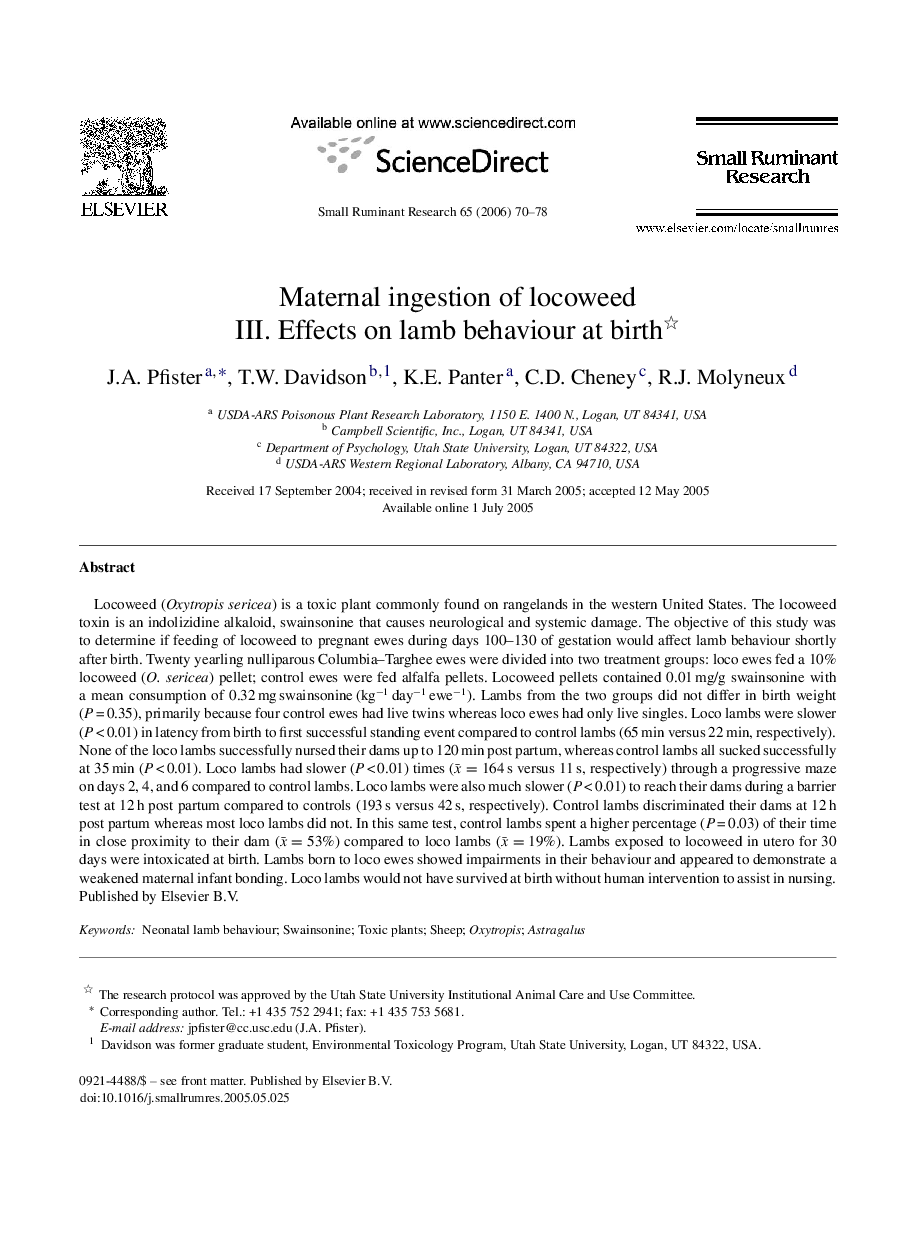| Article ID | Journal | Published Year | Pages | File Type |
|---|---|---|---|---|
| 2458630 | Small Ruminant Research | 2006 | 9 Pages |
Locoweed (Oxytropis sericea) is a toxic plant commonly found on rangelands in the western United States. The locoweed toxin is an indolizidine alkaloid, swainsonine that causes neurological and systemic damage. The objective of this study was to determine if feeding of locoweed to pregnant ewes during days 100–130 of gestation would affect lamb behaviour shortly after birth. Twenty yearling nulliparous Columbia–Targhee ewes were divided into two treatment groups: loco ewes fed a 10% locoweed (O. sericea) pellet; control ewes were fed alfalfa pellets. Locoweed pellets contained 0.01 mg/g swainsonine with a mean consumption of 0.32 mg swainsonine (kg−1 day−1 ewe−1). Lambs from the two groups did not differ in birth weight (P = 0.35), primarily because four control ewes had live twins whereas loco ewes had only live singles. Loco lambs were slower (P < 0.01) in latency from birth to first successful standing event compared to control lambs (65 min versus 22 min, respectively). None of the loco lambs successfully nursed their dams up to 120 min post partum, whereas control lambs all sucked successfully at 35 min (P < 0.01). Loco lambs had slower (P < 0.01) times (x¯=164 s versus 11 s, respectively) through a progressive maze on days 2, 4, and 6 compared to control lambs. Loco lambs were also much slower (P < 0.01) to reach their dams during a barrier test at 12 h post partum compared to controls (193 s versus 42 s, respectively). Control lambs discriminated their dams at 12 h post partum whereas most loco lambs did not. In this same test, control lambs spent a higher percentage (P = 0.03) of their time in close proximity to their dam (x¯=53%) compared to loco lambs (x¯=19%). Lambs exposed to locoweed in utero for 30 days were intoxicated at birth. Lambs born to loco ewes showed impairments in their behaviour and appeared to demonstrate a weakened maternal infant bonding. Loco lambs would not have survived at birth without human intervention to assist in nursing.
